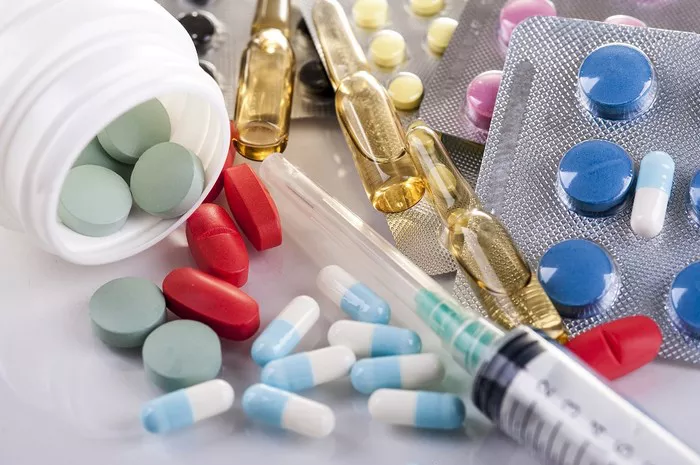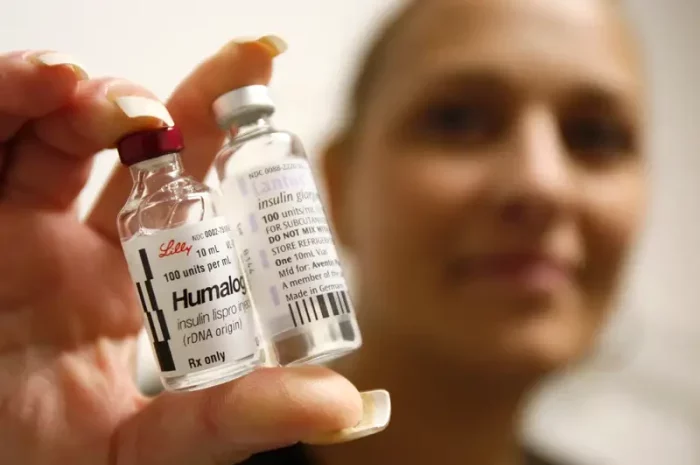Type 2 diabetes, a chronic condition characterized by insulin resistance and impaired glucose metabolism, requires a comprehensive approach for management. Alongside lifestyle modifications, pharmacotherapy plays a crucial role in maintaining glycemic control and reducing the risk of complications. This article explores the top 10 medications commonly prescribed for type 2 diabetes, examining their mechanisms, efficacy, and potential side effects.
1. Metformin
Mechanism of Action:
Metformin, a biguanide, is often the first-line treatment for type 2 diabetes. It primarily works by decreasing hepatic glucose production and improving insulin sensitivity in peripheral tissues. Additionally, it enhances glucose uptake and utilization by muscles.
Efficacy:
Numerous studies have demonstrated metformin’s efficacy in lowering HbA1c levels by approximately 1-2%. It also aids in modest weight loss or weight stabilization, which is beneficial for patients with type 2 diabetes.
Side Effects:
Common side effects include gastrointestinal issues such as diarrhea, nausea, and abdominal discomfort. Long-term use can sometimes lead to vitamin B12 deficiency. Lactic acidosis is a rare but serious adverse effect, particularly in patients with renal impairment.
2. Sulfonylureas
Mechanism of Action:
Sulfonylureas, such as glipizide, glyburide, and glimepiride, stimulate pancreatic beta cells to secrete more insulin. They act by binding to specific receptors on the beta cells, closing potassium channels, and triggering insulin release.
Efficacy:
These medications can lower HbA1c levels by 1-2%, making them effective in achieving glycemic targets. They are often used as second-line agents when metformin alone is insufficient.
Side Effects:
The primary side effect is hypoglycemia, which can be severe. Weight gain is also common, and these medications should be used cautiously in patients with renal or hepatic impairment.
3. Dipeptidyl Peptidase-4 (DPP-4) Inhibitors
Mechanism of Action:
DPP-4 inhibitors, including sitagliptin, saxagliptin, and linagliptin, enhance the incretin system by preventing the breakdown of incretin hormones. These hormones increase insulin synthesis and release from beta cells and decrease glucagon secretion from alpha cells.
Efficacy:
DPP-4 inhibitors reduce HbA1c levels by 0.5-1%. They are weight-neutral and have a low risk of hypoglycemia, making them a favorable option for many patients.
Side Effects:
These medications are generally well-tolerated, but some patients may experience upper respiratory tract infections, headaches, and joint pain. There is a potential risk of pancreatitis, though it is rare.
4. Glucagon-like Peptide-1 (GLP-1) Receptor Agonists
Mechanism of Action:
GLP-1 receptor agonists, such as exenatide, liraglutide, and dulaglutide, mimic the action of the incretin hormone GLP-1. They stimulate insulin release in response to meals, inhibit glucagon secretion, slow gastric emptying, and promote satiety.
Efficacy:
These agents can reduce HbA1c levels by 1-1.5% and often result in significant weight loss, which is beneficial for obese patients with type 2 diabetes. Some GLP-1 receptor agonists have shown cardiovascular benefits in clinical trials.
Side Effects:
Common side effects include nausea, vomiting, and diarrhea. There is also a risk of pancreatitis, and the medications are contraindicated in patients with a history of medullary thyroid carcinoma or multiple endocrine neoplasia syndrome type 2.
5. Sodium-Glucose Cotransporter-2 (SGLT-2) Inhibitors
Mechanism of Action:
SGLT-2 inhibitors, such as canagliflozin, dapagliflozin, and empagliflozin, block the reabsorption of glucose in the proximal renal tubules, leading to increased glucose excretion in the urine. This mechanism helps lower blood glucose levels.
Efficacy:
These drugs lower HbA1c by 0.5-1% and are associated with weight loss and reduced blood pressure. They have also demonstrated cardiovascular and renal benefits in patients with diabetes and high cardiovascular risk.
Side Effects:
Genital and urinary tract infections are common due to the increased glucose in the urine. Other potential side effects include dehydration, hypotension, and, rarely, diabetic ketoacidosis (even in the absence of significant hyperglycemia).
6. Thiazolidinediones (TZDs)
Mechanism of Action:
TZDs, including pioglitazone and rosiglitazone, improve insulin sensitivity by activating peroxisome proliferator-activated receptor gamma (PPAR-γ). This activation enhances glucose uptake in muscle and adipose tissue and reduces hepatic glucose production.
Efficacy:
TZDs can lower HbA1c by 1-1.5%. They also have beneficial effects on lipid profiles, particularly pioglitazone, which can improve HDL cholesterol and lower triglycerides.
Side Effects:
Weight gain, fluid retention, and an increased risk of heart failure are significant concerns with TZD therapy. Rosiglitazone has been associated with an increased risk of myocardial infarction, leading to restrictions on its use. Bone fractures and bladder cancer (with pioglitazone) are other potential risks.
7. Meglitinides
Mechanism of Action:
Meglitinides, such as repaglinide and nateglinide, stimulate rapid insulin secretion from the pancreas. They act similarly to sulfonylureas but have a shorter duration of action, making them suitable for postprandial glucose control.
Efficacy:
These medications can lower HbA1c by 0.5-1%. They are particularly useful for patients with erratic meal schedules or those who experience significant postprandial hyperglycemia.
Side Effects:
Hypoglycemia and weight gain are the primary concerns, though the risk of hypoglycemia is generally lower than with sulfonylureas due to their shorter action. They should be used cautiously in patients with liver disease.
8. Alpha-Glucosidase Inhibitors
Mechanism of Action:
Alpha-glucosidase inhibitors, such as acarbose and miglitol, delay the absorption of carbohydrates from the small intestine by inhibiting the enzyme alpha-glucosidase. This leads to a slower and lower rise in blood glucose levels after meals.
Efficacy:
These medications can reduce HbA1c by 0.5-0.8%. They are particularly effective for controlling postprandial hyperglycemia.
Side Effects:
Gastrointestinal side effects, including flatulence, diarrhea, and abdominal discomfort, are common due to fermentation of undigested carbohydrates in the colon. These side effects often limit their use.
9. Insulin Therapy
Mechanism of Action:
Various insulin formulations are used in type 2 diabetes management, including rapid-acting, short-acting, intermediate-acting, and long-acting insulins. They replace or supplement endogenous insulin to improve glycemic control.
Efficacy:
Insulin therapy is highly effective in lowering HbA1c, often by more than 2%, depending on the dose and regimen. It is essential for patients with severe hyperglycemia, significant insulin deficiency, or in those who fail to achieve control with oral agents.
Side Effects:
Hypoglycemia and weight gain are the primary side effects. Insulin regimens require careful monitoring and dose adjustments to minimize these risks.
10. Combination Therapies
Mechanism of Action:
Combination therapies involve the use of two or more antidiabetic medications with complementary mechanisms of action to achieve better glycemic control. Common combinations include metformin with sulfonylureas, DPP-4 inhibitors, or SGLT-2 inhibitors.
Efficacy:
Combination therapies often achieve greater HbA1c reductions than monotherapy by targeting different pathophysiological aspects of diabetes. They can also mitigate the side effects of individual agents by allowing lower doses of each.
Side Effects:
The side effects of combination therapies depend on the individual medications used. However, the risk of hypoglycemia and other adverse effects may be additive. Careful selection and monitoring are required to balance efficacy and safety.
See also:8 Worst Foods for Type 2 Diabetes
Conclusion
Managing type 2 diabetes requires a personalized approach, considering each patient’s unique clinical profile, comorbidities, and treatment goals. The medications discussed above represent the cornerstone of pharmacotherapy for type 2 diabetes, each with its benefits and potential risks. Metformin remains the first-line agent, but other medications are crucial for patients who need additional glycemic control or have specific clinical indications. Healthcare providers must continuously evaluate and adjust treatment regimens to optimize outcomes and minimize adverse effects. Through a comprehensive and individualized approach, patients with type 2 diabetes can achieve better glycemic control and reduce their risk of complications.
Related topics:


























